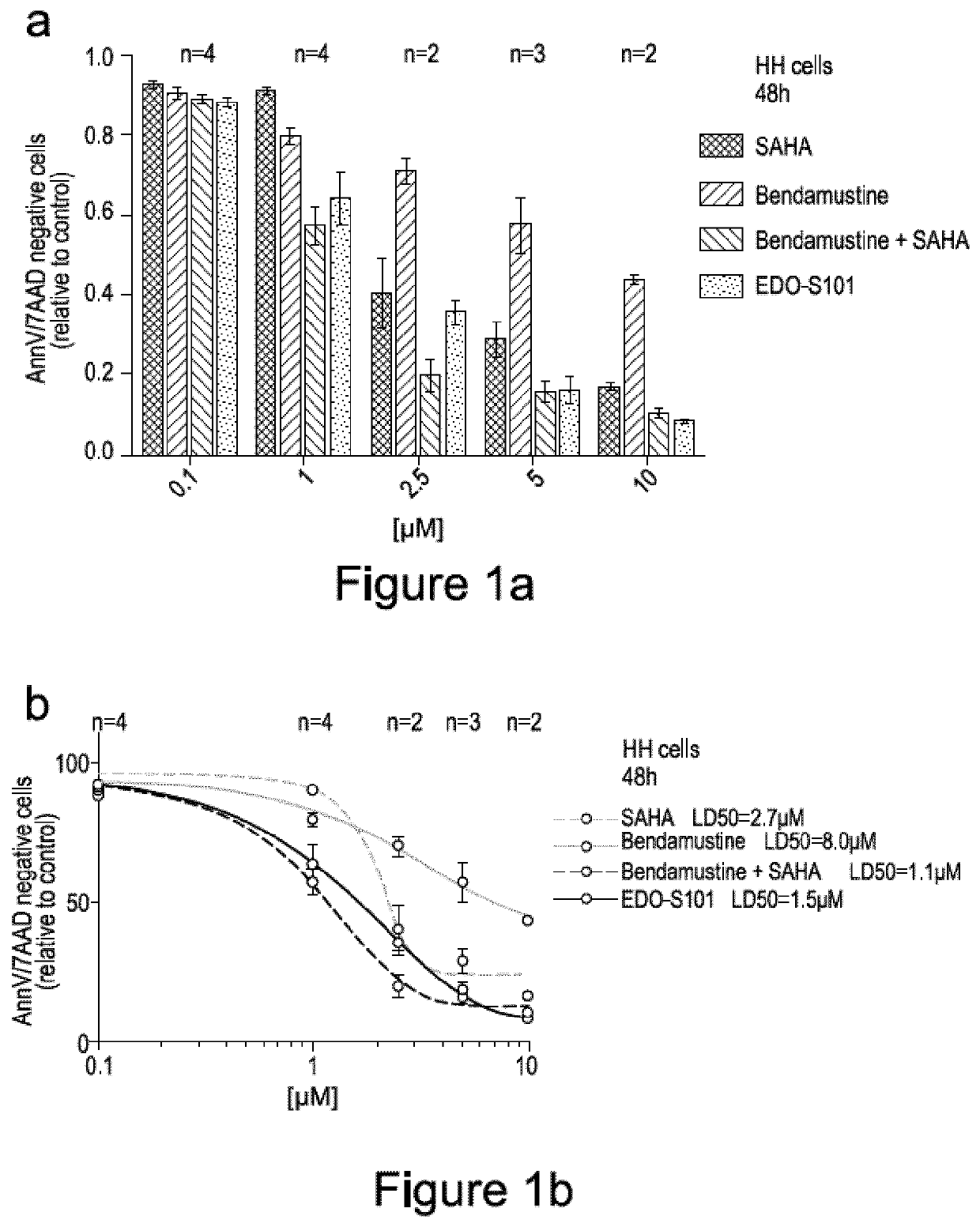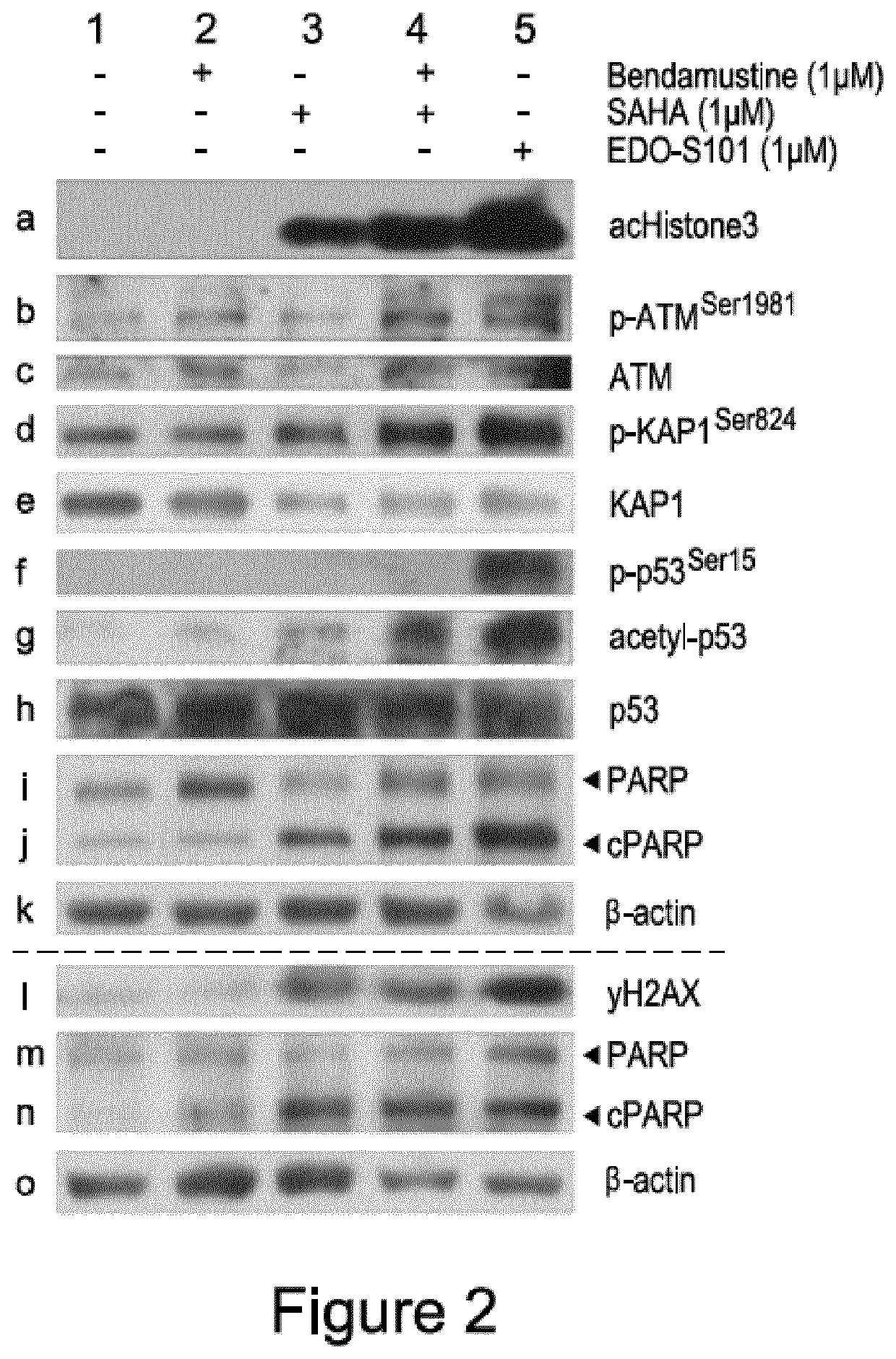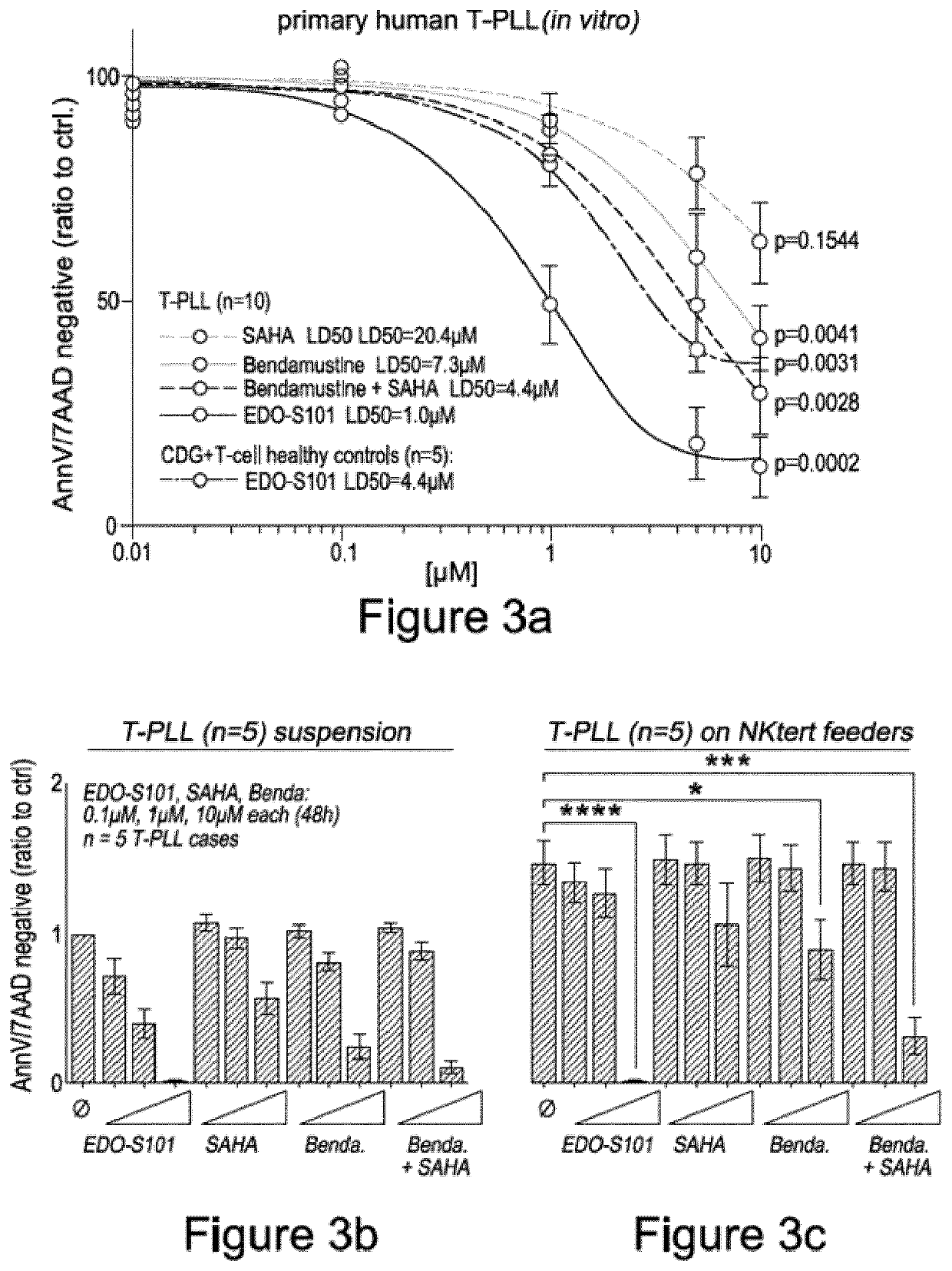Tinostamustine for use in the treatment of t-cell prolymphocytic leukaemia
a prolymphocytic leukaemia and tinostamustine technology, applied in the field of tinostamustine for use in the treatment of t-cell prolymphocytic leukaemia, can solve the problems of affecting the treatment effect, so as to achieve the effect of increasing concentration
- Summary
- Abstract
- Description
- Claims
- Application Information
AI Technical Summary
Problems solved by technology
Method used
Image
Examples
example 1
ility
[0088]To evaluate the cytotoxicity of EDO-S101 in comparison to bendamustine and vorinostat (SAHA), HH cells were treated with either EDO-S101, bendamustine, vorinostat or an equimolar bendamustine / vorinostat combination over a period 48 hours. Cells were treated with either 0.1 μM, 1 μM, 2.5 μM, 5 μM or 10 μM solutions of the indicated compounds (FIG. 1a).
[0089]Following treatment, cell death was evaluated by staining cells with the apoptosis markers Annexin-V and 7-AAD, and the number of apoptotic cells quantified by flow cytometry. Annexin-V specifically targets and identifies apoptotic cells. 7-AAD is a marker of late stage apoptotic, or necrotic cells. The number of Annexin-V and 7-AAD negative cells was counted for each sample. Each experiment was repeated for the indicated number of times, and the average number of apoptosis negative cells plotted and normalised relative to an untreated control sample (FIG. 1a). A dose response curve (FIG. 1b) for each treatment was subs...
example 2
lot Analysis of Patient T-PLL Samples
[0091]T-PLL cells (ATM mutated at L1238*, mono-allelic ATM loss, copy no=1.41) were isolated from peripheral blood (PB) of T-PLL patients were cultured in suspension, and treated with 1 μM of either bendamustine (FIG. 2, lane 2), vorinostat (lane 3), EDO-S101 (lane 5) or an equimolar combination of vorinostat / bendamustine (lane 4) for 36 hours. After this time, the cells were harvested, lysed and protein expression levels determined by western blot analysis.
[0092]FIG. 2 shows western blots of the cell lysate for each treatment, compared to a negative control (lane 1). Staining for β-Actin was used as a loading control for each western blot ran (rows a to k, and rows l to o respectively).
[0093]HDAC inhibitors target proteins which promote the deacetylation of histones, or the deacetylation of other proteins. Acetylation and deacetylation of histones are post-translational modifications implicated in DNA replication and repair, and therefore the ac...
example 3
of Apoptosis and Resistance of EDO-S101 Treated Cells to Stromal Cell Mediated Protection in T-PLL
[0100]To further evaluate apoptosis in cells treated with EDO-S101, primary human T-PLL cells were treated with either vorinostat, bendamustine, EDO-S101, or an equimolar combination of vorinostat and bendamustine, at 0.01 μM, 0.1 μM, 1 μM, 5 μM or 10 μM concentrations, and incubated for 48 hours. Following treatment, cell death was evaluated by staining cells with the apoptosis markers Annexin-V and 7-AAD, and the number of apoptotic cells quantified by flow cytometry. Each experiment was repeated for the indicated number of times, and the average number of apoptosis negative cells plotted and normalised relative to an untreated control sample. A dose response curve (FIG. 3a) for each treatment was subsequently plotted, and the LD50 (median lethal dose) of each treatment determined.
[0101]The LC50 values for each treatment were calculated for vorinostat (20.4 μM), bendamustine (7.3 μM),...
PUM
| Property | Measurement | Unit |
|---|---|---|
| humidity | aaaaa | aaaaa |
| humidity | aaaaa | aaaaa |
| survival time | aaaaa | aaaaa |
Abstract
Description
Claims
Application Information
 Login to view more
Login to view more - R&D Engineer
- R&D Manager
- IP Professional
- Industry Leading Data Capabilities
- Powerful AI technology
- Patent DNA Extraction
Browse by: Latest US Patents, China's latest patents, Technical Efficacy Thesaurus, Application Domain, Technology Topic.
© 2024 PatSnap. All rights reserved.Legal|Privacy policy|Modern Slavery Act Transparency Statement|Sitemap



